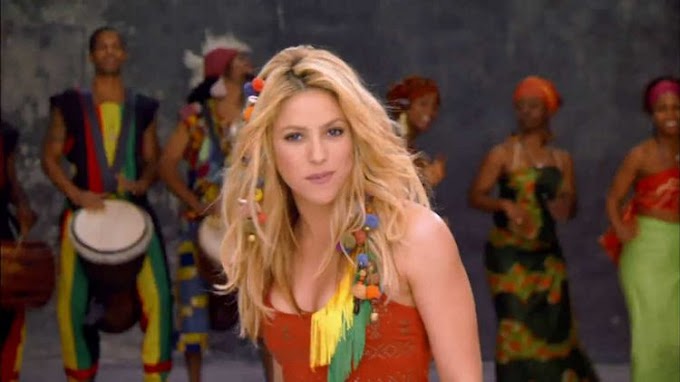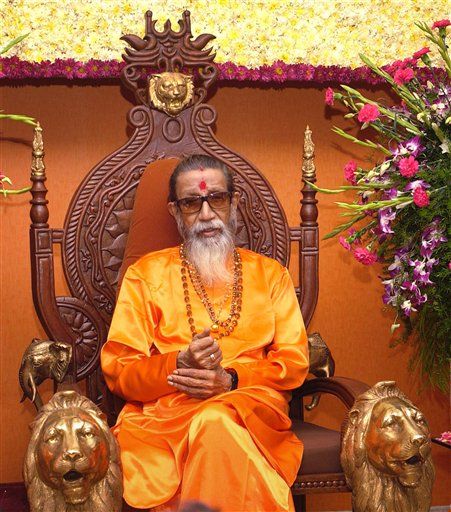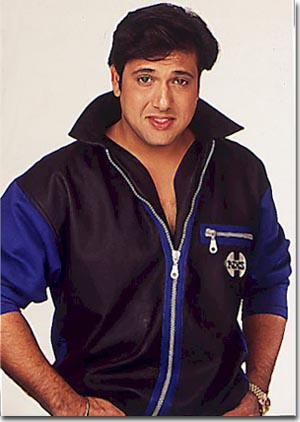Narendra Modi
From Wikipedia, the free encyclopedia
| Narendra Modi | |
| | |
|---|---|
| In office for the 3rd term | |
| Incumbent | |
| Assumed office 7 October 2001 | |
| Governor | Dr. Kamla Beniwal |
| Preceded by | Keshubhai Patel |
| Constituency | Maninagar |
| | |
| Born | September 17, 1950 Vadnagar, Gujarat, India |
| Political party | Bharatiya Janata Party |
| Residence | Gandhinagar, Gujarat, India |
| Alma mater | Gujarat University[1] |
| Religion | Hindu |
| Website | Narendra Modi Website |
| As of 9 March, 2009 Source: Government of Gujarat | |
Born in a middle class family in Vadnagar, a member of Rashtriya Swayamsevak Sangh since childhood, and an active politician since early in life having a masters degree in political science, Modi, along with Keshubhai Patel was seen as a hardliner early on and his coming to the fore in BJP led to a shakeup in the organization with Shankarsingh Vaghela leaving the party. In 1998, he was chosen by L K Advani to direct the election campaign in Gujarat as well as Himachal Pradesh. His aggressive and confident style was successful in the midst of failure to unite between Vaghela's RJP and Congress and the campaign culminated in a victory leading to Keshubhai becoming the chief minister in March, 1998.
Due to his successful direction of campaign in Gujarat and Himachal Pradesh, Modi, who was working at national level then, was promoted to become general secretary soon after.
He became Gujarat's Chief Minister in October 2001, promoted to the office at a time when his predecessor Keshubhai Patel had resigned, following the defeat of BJP in the by-elections.
He was re-elected in December 2002 as chief minister with 127 seats in the 182-member assembly. His term has been praised by leading industrialists[3][4] and religious leaders[5] for outstanding administration for turning Gujarat into an economic powerhouse and controlling terrorism. He has been criticised for alleged mismanagement of and alleged complicity in the 2002 Gujarat violence, for which the United States government has instituted a ban on him traveling to that country.[6][7]
In July 2007 he became the longest serving Chief Minister in Gujarat's history when he had been in power for 2063 days continuously.[8]
He was elected again for a third term[9] on 23 December 2007 with an emphatic win in the state elections, which he had cast as a "referendum on his rule".[10][11]
Some members of Corporate India consider him as a potent "future Prime Minister of India". These views were openly kept forward at the "Vibrant Gujarat Global Investors’ Summit" (VGGIS) by Reliance ADAG chairman Anil Ambani, who called him "the next leader of India (Future Prime Minister)”. Bharti Airtel chief Sunil Mittal, too, have openly acknowledged this view by stating that “if there is a CEO who can lead this country, it is Narendra Modi”.[12]
Contents[hide] |
[edit] Personal life
Modi was born on 17 September 1950 to a middle class family in Vadnagar in Mehsana district of North Gujarat. During the Indo-Pak war in the mid sixties, even as a young boy, he volunteered to serve the soldiers in transit at railway stations. In 1967, he served the flood affected people of Gujarat. As a young man, he joined the Akhil Bharatiya Vidyarthi Parishad, a student organization and was involved in the anti-corruption Nav Nirmāṇ ("Reconstruction") Movement. After working as a full time organizer for the organization, he was later nominated as its representative in the Bharatiya Janata Party.[13] He started with Rashtriya Swayamsevak Sangh (RSS),a socio-cultural organization with a focus on social and cultural development of India.He completed his schooling in Vadnagar. He holds the distinction of being a well-educated politician, having earned a masters graduate degree in Political Science from Gujarat University. He is known for being a poet and has published few book of poetry. He is a bachelor. He is the first and thus far, only, bachelor chief minister of Gujarat.
[edit] Early activism and politics
Narendra Modi (left) with Nitish Kumar, Bihar chief minister, at a BJP rally
He entered mainstream politics in 1987 by joining the BJP[citation needed]. Just within a year, he was elevated to the level of General Secretary of the Gujarat unit. By that time he had already acquired a reputation for being a highly efficient organizer[citation needed]. He took up the challenging task of energizing the party cadres in right earnest. The party started gaining political mileage and formed a coalition government at the centre in April 1990. This partnership fell apart within a few months, but the BJP came to power with a two-thirds majority on its own in Gujarat in 1995. Since then, the BJP has been governing Gujarat.
Between 1988 and 1995, Modi was recognized as a master strategist who had successfully gained the necessary groundwork for making the Gujarat BJP the ruling party of the state[citation needed].
During this period, Modi was entrusted with the responsibility of organizing two crucial national events, the Somnath to Ayodhya Rath Yatra (a very long march) of L.K. Advani and a similar march from Kanyakumari (the southernmost part of India) to Kashmir in the North. The ascent of the BJP to power at New Delhi in 1998 has been attributed to these two highly successful events, substantially handled by Modi[citation needed].
In 1995, he was appointed the National Secretary of the party and given the charge of five major states in India – a rare distinction for a young leader[citation needed]. In 1998, he was promoted as the General Secretary (Organization), a post he held until October 2001, when he was chosen to be the Chief Minister of Gujarat, one of the most prosperous and progressive states of India.
During his stint at the national level, Modi was given the responsibility to oversee the affairs of several state level units, including the sensitive and crucial state of Jammu and Kashmir and the equally sensitive north-eastern states. He was responsible for revamping the party organization in several states[citation needed]. While working at the national level, Modi emerged as an important spokesman for the party and played a key role on several important occasions.
[edit] Tenure as Chief Minister
In October 2001, he was called upon by the party to lead the Government in Gujarat. When the Modi government was sworn in on 7 October 2001, the economy of Gujarat was reeling under the adverse effects of several natural calamities, including a massive earthquake in January 2001. However Modi, a master strategist, who was enriched by national and international exposure and experience, decided to take the bull by its horns.He is believed to be a protégé of Lal Krishna Advani, who is a senior leader of the Bharatiya Janata Party himself. Advani has praised Modi on numerous occasions, referring to him as "a leader who, after being subjected to a malicious and prolonged campaign of vilification, has been able to impress even his critics with his determination, single-minded focus, integrity and a wide array of achievements in a relatively short time."[16]
[edit] Gujarat earthquake
Main article: 2001 Gujarat Earthquake
The biggest challenge which he had to face, when he took over as the Chief Minster, was the reconstruction and rehabilitation of the areas affected by the massive Gujarat Earthquake of January 2001. Bhuj was a city of rubble and thousands of people were living in temporary shelters without any basic infrastructure. Today Bhuj is proof of how Modi has turned adversity into an opportunity for holistic development. In this critical situation, Modi is credited with starting immediate work to re-organize and stimulate the local economy.[17] Modi made an international record of restoration of 876618 houses in just 500 days. For Narendra Modi's outstanding contribution for disaster management and rehabilitation, on 16-10-2003 Gujarat govt got UN Sasakawa Award for outstanding work in the field of disaster management and risk reduction.[edit] Gujarat violence
Main articles: 2002 Gujarat violence and Godhra Train Burning
The skyline of Ahmedabad filled with smoke as buildings and shops are set on fire by rioting mobs.
[edit] Political fallout
As an aftermath of the riots, there were calls for Modi to resign from his position as chief minister of Gujarat. The opposition parties stalled the national parliament over the issue. Even Dravida Munnetra Kazhagam (DMK) and Telugu Desam Party (TDP), allies of the BJP, asked for Modi's resignation.[24][25] Modi submitted his resignation to the Governor and recommended the dissolution of the 10th Gujarat Legislative Assembly.[26][27] In the following state re-elections the BJP, led by Modi, won 127 seats in the 182-member assembly.The United States revoked a visa for Modi the following year. He was cited for responsibility for violations of religious freedom under the International Religious Freedom Act of 1998.[28]
In April 2009, India's Supreme Court appointed a special team of investigators to look into the role Modi had played in the alleged anti-Muslim conspiracy.[7] The team was appointed in response to the complaint of Jakia Jafri, the widow of ex-Congress MP Ehsan Jafri, who was murdered in the riots.[29]
[edit] 2007 elections
Modi's 2007 election campaign was marked with some passionate speeches reflecting his vision for Gujarat and his aggressive leadership. One such speech was given at Magrol in response of Sonia Gandhi's speech calling him a "merchant of death",[30] and referred to Sohrabuddin's killings. For this speech the Election Commission of India, a constitutional body governing election proceedings in India, cautioned Modi as it considered it as indulging in an activity which may aggravate existing differences between different communities. However, a similar procedure was not brought against Sonia Gandhi causing a lot of furore in Modi's supporters.[31][edit] Gujarat development
Main article: Gujarat Development under Narendra Modi
Modi took charge of Gujarat when its economy was shrinking and the domestic growth was stagnant.[32] Faced with massive economic losses, he re-organised the government's administrative structure and embarked upon a massive cost-cutting exercise.[33] As a result of his elaborate efforts, Gujarat registered a GDP growth rate of over 10% during his first tenure. This was the highest growth rate among all the Indian states.[34]As a Chief Minister, Modi concretely put to practice his envisaged Gujarat by means of various yojana.[35] This includes Panchamrut Yojana,[36][37][38] a five-pronged strategy for an integrated development of the state, Sujalam Sufalam, a scheme to create a grid of water resources in Gujarat in an innovative step towards water conservation and its appropriate utilization.
- Krishi Mahotsav – agricultural research labs for the land
- Chiranjeevi Yojana – to reduce infant mortality rate
- Matru Vandana – providing preventive and curative services under the Reproductive and Child Health Programme
- Beti Bachao – campaign to protect baby girls to improve sex ratio
- Jyotigram Yojana – to electrify every village
- Karmayogi Abhiyan – to educate and train government employee
- Kanya Kalavani Yojana – to encourage the education of girls
- Balbhog Yojana – for midday meal for students
He also took the intiative to raise the controversial Narmada Dam's height above 100 metres. Modi went on to raise the dam's height to 121 metres even after being criticised by environment activists. Though large sections of farmers and other communities were unhappy with his policies, industries thrived during his regime and the condition of the infrastructure in the state improved. [39]
[edit] Position on terrorism
On 18 July 2006 Modi delivered a speech criticizing Indian Prime Minister Manmohan Singh "for his reluctance to revive anti-terror legislations" like the Prevention of Terrorism Act. He asked the Centre to empower states to invoke tougher laws in the wake of the blasts in Mumbai.[40] Quoting Modi:| “ | Terrorism is worse than a war. A terrorist has no rules. A terrorist decides when, how, where and whom to kill. India has lost more people in terror attacks than in its wars.[40] | ” |
During the November 2008 Mumbai attacks, on Thursday 27 November, Narendra Modi held a meeting to discuss waterfront security along the coastline.[43] At the conclusion of the meeting, it was decided that a number of steps be taken to improve security:
- Increase the number of police stations along the coast to 50 (from 10)
- Increase the number of police to 1500 from 250
- 30 modern high-speed surveillance boats (there are currently none)
[edit] 2009 Lok Sabha elections
Although the BJP narrowly managed to win majority of the seats in Gujrat, the loss of the Rajkot seat, after almost 20 years of control, was unexpected. Prominent politicians like Sharad Yadav commented that the BJP's projection of Modi as a future Prime Minister affected its performance in the 2009 Lok Sabha elections.[44] 'A confidential report, prepared by the BJP on the reasons for the party's humiliating defeat in the 2009 Lok Sabha election, has blamed Modi' among many Indian politicians and other factors'. Furthermore BJP criticism of Modi worries Gujarat leaders[45][46][edit] Awards and recognitions
- 30 January 2006 – In a nationwide survey conducted by India Today, Narendra Modi was declared the Best Chief Minister of the country.[47]
- 5 February 2007 – Adjudged the best CM for the third time in the nationwide survey conducted by India Today – ORG Marg, a unique achievement for any CM during a 5-year tenure.
- 25 August 2009 – Chosen as The Asian Winner of the fDi Personality of the Year Awards for 2009 by fDi Magazine.[48]










0 Comments